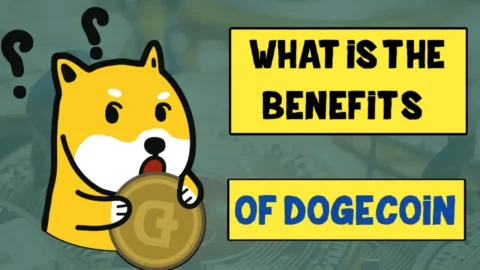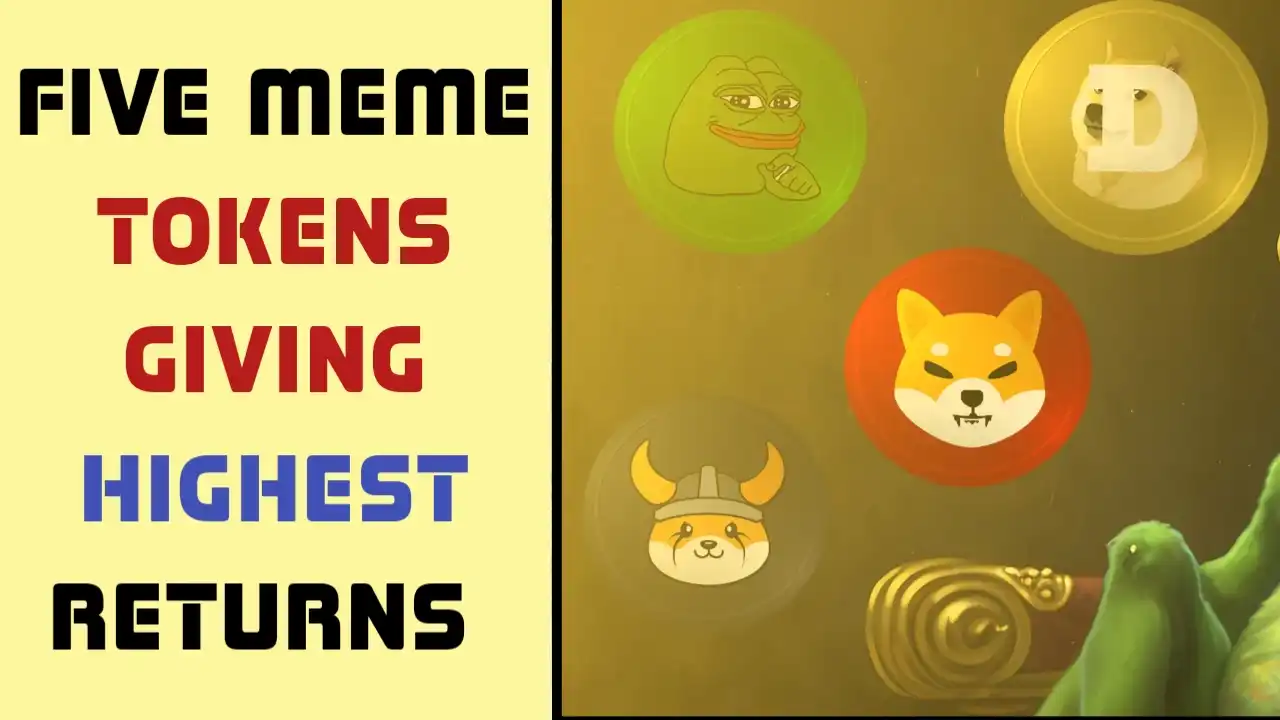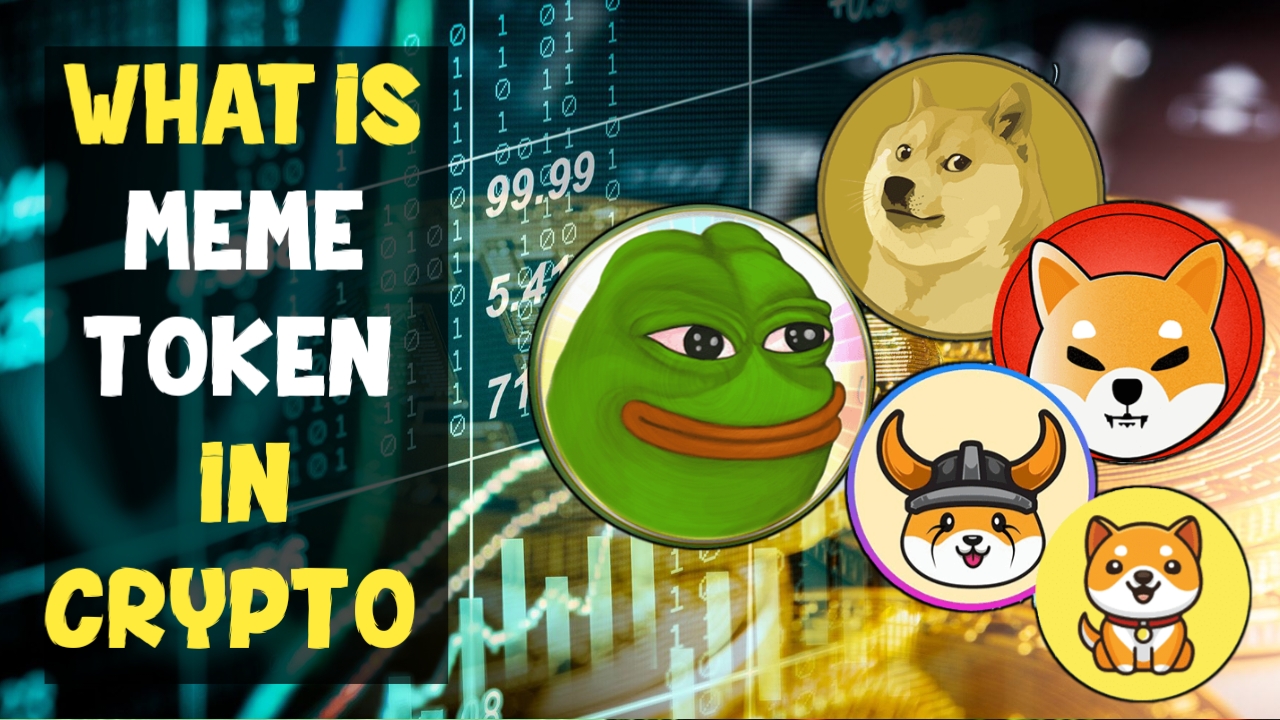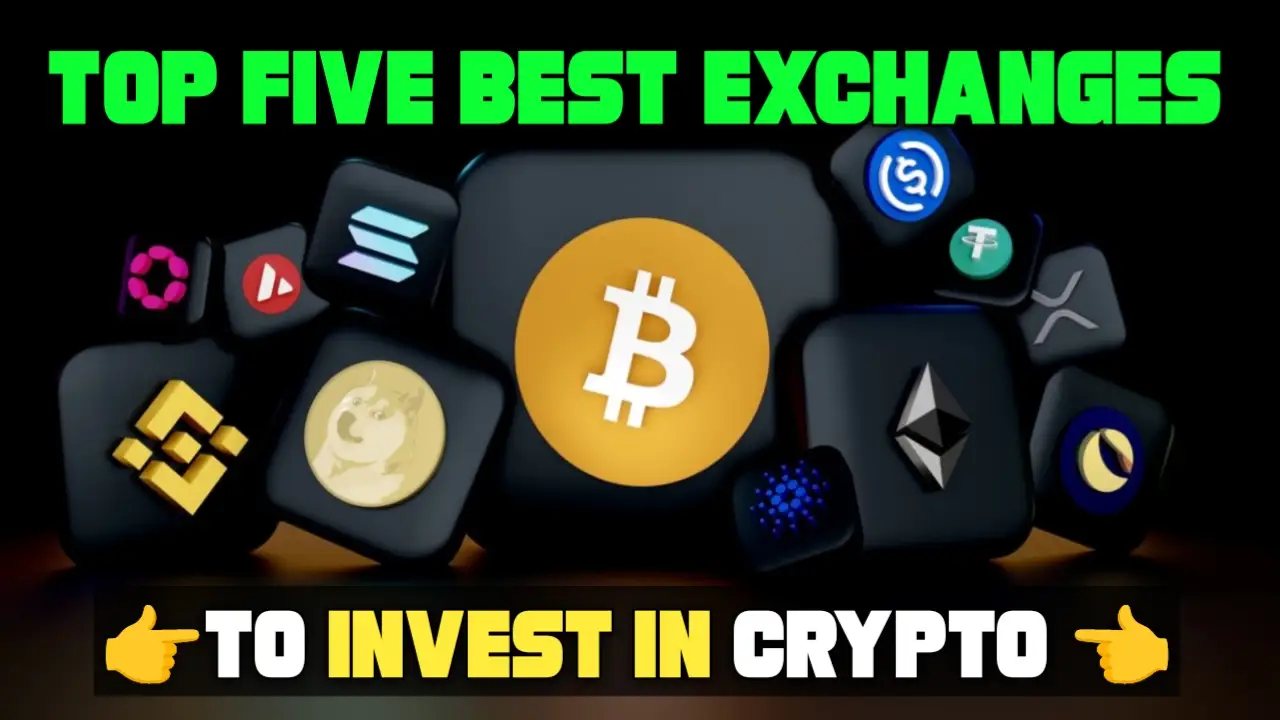DOGECOIN: In 2025, Dogecoin (DOGE) continues to be one of the most popular meme coins in the cryptocurrency market, fueled by its strong community and ongoing celebrity endorsements, notably from Elon Musk. Despite being originally created as a joke, Dogecoin has established itself as a well-known digital asset, often regarded for its fast transactions and low fees. However, Dogecoin’s value remains highly volatile, primarily driven by speculation and social media trends rather than fundamental utility.
While it has had moments of significant growth, its price can be unpredictable, especially during market fluctuations or when hype fades. Investors in 2025 should weigh the potential for short-term gains with the understanding that Dogecoin remains a high-risk, speculative investment. As always, those looking to invest should consider diversifying their portfolio and staying updated on the broader cryptocurrency landscape, including regulatory changes, which could impact Dogecoin’s future.
What are the features of DogeCoin
Dogecoin (DOGE) has several distinctive features that set it apart from other cryptocurrencies:
1. Meme-Based Origin
- It was inspired by the viral “Doge” meme featuring a Shiba Inu dog with comic sans text.
2. Fast Transactions and Low Fees
- One of Dogecoin’s key features is its ability to process transactions quickly with low fees. It typically confirms transactions faster than Bitcoin, making it more practical for small payments or tipping online.
3. Inflationary Supply Model
- Unlike Bitcoin, which has a capped supply of 21 million coins, Dogecoin has an inflationary supply model. Approximately 5 billion new Dogecoins are mined every year, meaning there is no maximum supply. This can affect its long-term value due to inflationary pressure.
4. Large Active Community
- Dogecoin has a large, vibrant, and engaged community, which plays a crucial role in its adoption and success. Many users and enthusiasts participate in charitable events, online tipping, and meme-sharing, keeping the coin’s presence strong.
5. Proof-of-Work Consensus
- Dogecoin uses the Proof-of-Work (PoW) mechanism, similar to Bitcoin. However, Dogecoin’s PoW is less resource-intensive than Bitcoin’s, making it more accessible for smaller miners.
6. Friendly and Playful Brand
- Dogecoin is known for its fun and approachable image. Its branding, with the iconic Shiba Inu dog and humorous language, makes it appealing to people new to cryptocurrency and those looking for a less serious alternative to other digital currencies.
7. Support for Charitable Causes and Tipping
- Dogecoin has been used in various charitable efforts, including funding clean water projects and supporting athletes. Its community is often focused on giving back, and it’s commonly used for “tipping” content creators online for their work.
8. Low Market Capitalization Relative to Bitcoin and Ethereum
- Dogecoin has a relatively lower market cap compared to Bitcoin and Ethereum, which means that its price can be more susceptible to large swings, especially based on social media trends or celebrity endorsements.
9. Celebrity Endorsements
- Dogecoin has garnered attention from high-profile figures like Elon Musk, whose tweets and comments often drive significant price fluctuations. These endorsements have played a role in elevating Dogecoin’s visibility and value, though they also contribute to its speculative nature.
10. No Centralized Authority
- Like many decentralized cryptocurrencies, Dogecoin operates without a central governing body or organization. Decisions regarding the coin’s development are made by the community of developers and users.
11. Integration with Other Cryptocurrencies
- Dogecoin shares its blockchain with Litecoin through a technology called merged mining, allowing Litecoin miners to also mine Dogecoin without extra effort. This has made Dogecoin mining easier and more accessible.
While Dogecoin is often seen as a meme coin, its large community, low fees, and active presence in online culture have allowed it to maintain relevance in the crypto space, even in 2025.
Here is some important information about DodgeCoin
| Feature | Details |
|---|---|
| Coin | Doge Coin |
| Launch | 06 December 2013 |
| Founders | Billy Markus & Jackson Palmer |
| Max Supply | No maximum supply |
| Transaction Fees | Very low |
| Market Rank | top 10 to 20 cryptocurrencies |
| Primary Exchanges | Binance, Coinbase, Kraken, Gemini, and more |
| Symbol | DOGE |
What is the price history of DogeCoin?
The price history of Dogecoin (DOGE) has been marked by several significant periods of growth, crashes, and hype-driven spikes. Here’s an overview of key moments in Dogecoin’s price history:

1. Launch and Early Years (2013–2017):
- 2013: Dogecoin was launched in December 2013 at a very low price of $0.00026 per DOGE.
- 2014–2015: In these early years, Dogecoin remained relatively cheap and stable, fluctuating between $0.0001 to $0.001. Most of its trading was driven by online communities, and it became a popular coin for tipping and charity donations.
- 2016–2017: Throughout these years, Dogecoin saw steady but slow growth, reaching prices of around $0.0002 to $0.002.
2. First Major Spike (2017):
- In late 2017, Dogecoin experienced a massive surge, along with many other cryptocurrencies during the broader crypto market rally. It reached an all-time high in December 2017, peaking at around $0.018 per DOGE (a 9,000% increase from its early price).
- However, this spike was short-lived, and Dogecoin’s price dropped back down to $0.005 in early 2018, as the cryptocurrency market underwent a major correction.
3. Flat Years (2018–2020):
- After the 2017 bull run, Dogecoin’s price remained relatively flat for the next few years. It fluctuated between $0.002 and $0.005 during this period.
- Throughout 2019 and 2020, Dogecoin’s price remained fairly low, with some minor increases, but it didn’t attract significant attention from the broader market.
4. 2021 Surge: The Meme Coin Explosion:
- January 2021: Dogecoin’s price began rising significantly, gaining attention due to its meme status, social media trends, and celebrity endorsements (especially from Elon Musk).
- April 2021: Dogecoin experienced a massive surge in price, reaching its new all-time high at $0.73 in May 2021, driven by Musk’s influence and a surge in social media-driven interest.
- During this period, Dogecoin became one of the top 10 cryptocurrencies by market cap, and its trading volume and media presence reached new heights. However, this spike was speculative and driven mostly by online hype.
5. 2022 Market Correction:
- After its 2021 highs, Dogecoin saw a significant drop in 2022, in line with the broader market correction in the cryptocurrency industry.
- By June 2022, Dogecoin’s price had fallen to around $0.05, and it struggled to regain momentum for most of the year. The downturn in the market was primarily caused by rising inflation, tightening monetary policies, and regulatory concerns.
6. 2023-2024: Stabilization & Low Volatility:
- Throughout 2023, Dogecoin remained relatively stable, fluctuating between $0.05 and $0.10, with minor rallies due to various events like Musk’s continued involvement with the coin and tweets.
- It still retains a loyal community but is no longer experiencing the explosive price surges of 2021.
7. 2025 and Beyond:
- As of early 2025, Dogecoin’s price is still subject to volatility, with fluctuations happening based on broader market trends, social media influence, and celebrity endorsements (especially Musk’s occasional mentions).
- Many investors are cautiously watching Dogecoin, given its history of unpredictability but also its ability to rebound due to community-driven efforts and occasional high-profile support.
Price Summary:
| Period | Price Range (USD) | Key Events |
|---|---|---|
| 2013–2017 | $0.00026 – $0.002 | Launched in December 2013; remained very low for years, used for tipping. |
| Late 2017 | $0.018 | Major rally during the cryptocurrency bull market. |
| 2018–2020 | $0.002 – $0.005 | Long period of low volatility and limited growth. |
| 2021 Surge | $0.01 – $0.73 | Influenced by Elon Musk and social media, reaching an all-time high. |
| 2022 | $0.05 – $0.15 | Major correction along with the broader crypto market crash. |
| 2023 | $0.05 – $0.10 | Stabilization; continued community and celebrity-driven interest. |
| 2025 (estimated) | Volatile, fluctuating between $0.05 to $0.10 | Dependent on market trends, meme coin cycles, and celebrity endorsements. |
Should we invest in Doge in 2025
Investing in Dogecoin (DOGE) in 2025 can be considered, but it’s important to understand the specific risks and rewards of this meme coin.
Here are some factors to consider:
Pros of Investing in Dogecoin in 2025:
- Strong Community Support: Dogecoin has a dedicated and passionate community, which has played a large part in its growth and popularity. The social media presence and memes often push the coin’s visibility.
- Celebrity Endorsements: Elon Musk has shown frequent support for Dogecoin, and his influence often drives interest and price fluctuations.
- Established Brand: Dogecoin has been around since 2013, giving it a long-standing presence in the market compared to newer meme coins.
- Low Transaction Fees: Compared to many other cryptocurrencies, Dogecoin is often praised for its relatively low transaction fees, making it more attractive for smaller payments.
Cons to Consider:
- Volatility: Like most meme coins, Dogecoin can experience significant price swings, making it a high-risk investment. It often moves based on sentiment and speculative interest, not necessarily fundamentals.
- Lack of Intrinsic Value: Dogecoin, while popular, doesn’t have the same underlying utility as some other cryptocurrencies like Ethereum or Bitcoin. Its value is largely driven by hype, trends, and social factors.
- Market Trends: Meme coins, including Dogecoin, tend to be cyclical and can face downturns during bearish market conditions. Their value may drop sharply if market sentiment turns negative.
- Regulatory Risks: As cryptocurrency regulation becomes stricter, meme coins may face challenges. If regulators target Dogecoin, its price could be affected.
Strategy:
- Diversification: If you are considering investing in Dogecoin, consider doing so as part of a diversified portfolio rather than betting all your capital on it. Cryptocurrency, especially meme coins, is inherently risky.
- Research: Keep up with market trends, community support, and regulatory developments. Crypto investments can be volatile, and staying informed will help mitigate risks.
What are the benefits of Dogecoin?
Dogecoin offers several unique benefits that make it appealing to certain investors and users. While it originated as a joke, it has grown into one of the most well-known cryptocurrencies due to its community and features. Here are some key benefits of Dogecoin:

1. Low Transaction Fees
- Dogecoin’s fees are significantly lower compared to many other cryptocurrencies like Bitcoin or Ethereum. This makes it more practical for microtransactions, small payments, and everyday use. It is often used for tipping content creators online or making small purchases.
2. Fast Transaction Speed
- Dogecoin has a faster block time (around 1 minute), which means transactions are confirmed quickly. This makes it an attractive choice for real-time payments, as opposed to slower coins like Bitcoin, which can take several minutes to hours for transaction confirmation, especially during periods of high demand.
3. Strong and Loyal Community
- One of the most significant benefits of Dogecoin is its large, active, and supportive community. The Dogecoin community is known for engaging in charitable initiatives, such as funding clean water projects and supporting athletes and causes. The sense of belonging and camaraderie makes it an appealing option for many crypto enthusiasts.
4. Celebrity Endorsements and Popularity
- Elon Musk’s frequent mentions of Dogecoin have brought it into the spotlight, making it a household name. His tweets and public support have driven much of Dogecoin’s popularity and value, often causing short-term price surges. This has helped Dogecoin stay relevant, despite its origins as a meme coin.
5. Inflationary Supply
- Dogecoin’s inflationary supply model means new coins are created every year (around 5 billion new DOGE per year). While this might reduce scarcity over time, it also ensures that Dogecoin remains accessible to miners and users, with no risk of running out of coins to distribute. This can help maintain a steady level of circulation.
6. Decentralization and Community Control
- Dogecoin is decentralized, meaning it is not controlled by a single entity. This offers users more control over the network and reduces the risk of centralization that can occur with other cryptocurrencies or centralized financial systems.
7. Easy to Mine
- Dogecoin uses the Scrypt algorithm for mining, which is less energy-intensive compared to Bitcoin’s SHA-256 algorithm. This makes it easier for people with lower computational power to mine Dogecoin, promoting a more inclusive mining environment.
8. Widely Accepted for Payments
- Although not as widely accepted as Bitcoin or Ethereum, Dogecoin is used by some merchants for payments. The coin has also been integrated into several payment platforms, allowing users to make purchases with Dogecoin.
9. Integration with Other Cryptocurrencies
- Dogecoin can be merged mined with Litecoin, meaning miners can mine both coins simultaneously without additional energy consumption. This helps secure the network and reduces the environmental impact of mining.
10. Charity and Social Causes
- Dogecoin’s community has been involved in various charitable campaigns. For example, they have raised funds to sponsor NASCAR drivers, donate to clean water projects, and contribute to animal shelters. This focus on charity and social causes has given Dogecoin a positive reputation in the crypto space.
11. Fun and Accessible
- Dogecoin’s fun, meme-based origin makes it accessible and appealing to a broader audience, including newcomers to cryptocurrency. The Shiba Inu dog and humorous language surrounding Dogecoin make it an approachable entry point for people who are unfamiliar with traditional cryptocurrencies.
What are the Disadvantages of Dogecoin
Despite its popularity and unique benefits, Dogecoin (DOGE) also has several disadvantages that investors and users should be aware of:
1. Inflationary Supply
- No cap on supply: Dogecoin has an inflationary supply model, meaning that around 5 billion new coins are mined each year. Unlike Bitcoin, which has a maximum supply of 21 million coins, Dogecoin’s continuous increase in supply can potentially reduce its long-term value due to inflation. As more coins enter circulation, the purchasing power of each coin may diminish over time, which could negatively impact its price.
2. Lack of Utility and Use Cases
- Limited real-world applications: Dogecoin started as a meme and, while it is used for tipping and small transactions, it doesn’t offer the same level of utility as other cryptocurrencies like Bitcoin or Ethereum. Bitcoin is seen as a store of value, and Ethereum is used for decentralized applications (dApps), but Dogecoin’s primary appeal remains largely in its community and meme status.
- Not a “serious” investment: Many investors view Dogecoin as a speculative or “fun” investment rather than a serious, utility-driven cryptocurrency. This can make its price highly volatile and dependent on trends rather than technological advancement or real-world adoption.
3. Extreme Price Volatility
- Price swings: Dogecoin is known for its wild price fluctuations, often moving based on hype, social media trends, and celebrity endorsements. This makes it risky for investors, as its value can surge dramatically in short periods, only to plummet just as quickly when interest wanes. The speculative nature of Dogecoin means that price stability is rare.
- Influence of social media and influencers: Dogecoin’s price is often driven by tweets from celebrities like Elon Musk. This reliance on outside influences can be unpredictable and make Dogecoin a more volatile investment compared to more established cryptocurrencies.
4. Lack of Development and Innovation
- Limited development progress: Dogecoin’s development has largely been community-driven, and its technical updates have been slow compared to other major cryptocurrencies like Bitcoin or Ethereum. Unlike Ethereum, which is constantly evolving with the Ethereum 2.0 upgrade and new innovations, Dogecoin doesn’t have the same level of active development or technological roadmap.
- No clear vision: There is no overarching long-term plan or clear innovation for Dogecoin, which could hinder its growth and potential use cases in the future.
5. Environmental Impact of Mining
- Energy consumption: Like Bitcoin, Dogecoin uses the Proof-of-Work (PoW) consensus algorithm, which requires significant computational power and electricity to mine. While it is less energy-intensive than Bitcoin, the environmental impact of PoW-based cryptocurrencies remains a concern, especially as more coins are mined and the network grows.
6. Market Manipulation Risk
- Susceptibility to market manipulation: Dogecoin’s price is often manipulated by social media trends, tweets, and endorsements from high-profile figures, leading to artificial price surges and drops. This can result in massive gains or losses for investors, and the market’s reliance on hype makes it vulnerable to manipulation by coordinated groups or influencers.
- “Pump and dump” risks: artificially inflated by coordinated buying, only to crash once the hype dies down.
7. Perception as a “Meme Coin”
- Lack of seriousness: Dogecoin is often seen as a “meme coin” or a joke in the cryptocurrency space. While its community and celebrity endorsements have given it some legitimacy, the coin’s origins as a joke can deter serious investors and institutions from taking it seriously as a long-term investment or a currency for everyday use.
- Brand identity: While its fun and lighthearted image is part of its appeal, it also makes Dogecoin less attractive to people looking for a serious, professional cryptocurrency project. Its meme-driven nature can limit its broader adoption in more traditional or formal markets.
8. Regulatory Uncertainty
- Unclear regulatory status: Like most cryptocurrencies, Dogecoin faces potential regulatory challenges. Governments worldwide are working on defining the regulatory framework for cryptocurrencies, and Dogecoin could face issues if stricter regulations are introduced, such as increased scrutiny on meme coins or higher taxes on cryptocurrency trading.
- Lack of institutional support: While Dogecoin has gained attention from individual investors, it lacks institutional adoption and support compared to other major cryptocurrencies. This lack of institutional backing could hinder its growth as a serious asset class or means of payment.
9. Security Risks
- Risk of scams and fraud: The cryptocurrency space is full of scams, and Dogecoin is no exception. Fraudulent schemes or exchanges offering “fake” Dogecoin or promising high returns could put investors at risk of losing their funds. The lack of significant oversight and regulation in the meme coin space increases the potential for fraud.
How to make Money from DogeCoin
There are several ways to earn money from Dogecoin (DOGE), ranging from traditional investment strategies to utilizing the coin for active income generation. Below are some common ways people earn money with Dogecoin:

1. Buy and Hold (Long-Term Investment)
- How to earn: The most straightforward way is to buy Dogecoin at a low price and hold it until the value increases. You sell the coins when the price has appreciated.
- Who benefits: Long-term investors who believe in Dogecoin’s future growth or are speculating on its price rising. Investors like Elon Musk have supported Dogecoin, which has led many to buy and hold in anticipation of price surges.
- Risks: This is a speculative investment, and Dogecoin’s price can be volatile, so it’s not guaranteed to rise in value.
2. Trading Dogecoin
- How to earn: Active traders buy and sell Dogecoin at different prices, profiting from short-term price fluctuations. They use platforms like Binance, Kraken, or Coinbase to engage in daily or weekly trading.
- Who benefits: Day traders or swing traders who have experience with cryptocurrency markets and can predict market trends and price movements.
- Risks: Trading is risky, and prices can be unpredictable, especially for meme coins like Dogecoin. It requires knowledge of technical analysis and market timing.
3. Staking and Yield Farming (In Some Platforms)
- How to earn: Some platforms offer staking or yield farming for Dogecoin, where you lock your Dogecoin into a platform, and in return, you receive interest or rewards.
- Who benefits: Crypto enthusiasts who are comfortable with DeFi (Decentralized Finance) and want to earn passive income on their Dogecoin holdings.
- Risks: Platforms offering staking or yield farming are risky, and there could be potential losses or platform failures.
4. Dogecoin Mining
- How to earn: Mining Dogecoin involves using computer power to solve complex mathematical problems, which helps secure the network. Miners are rewarded with newly created Dogecoin for their efforts.
- Who benefits: Miners who own specialized hardware (or “mining rigs”) capable of solving the necessary algorithms. Miners who also participate in merged mining can mine Dogecoin and Litecoin simultaneously.
- Risks: Mining requires significant upfront investment in hardware and can be energy-intensive, which reduces the profitability. The mining difficulty also increases over time, so it may not be as profitable for smaller-scale miners.
5. Dogecoin Faucets
- How to earn: Dogecoin faucets are websites or apps that give away small amounts of Dogecoin for free, usually in exchange for completing simple tasks (like watching ads, filling out surveys, or solving captchas).
- Who benefits: People new to cryptocurrency who want to accumulate small amounts of Dogecoin without investing money. It’s also a way to test out Dogecoin without committing significant funds.
- Risks: Faucets provide small payouts, and the time and effort spent may not yield significant earnings. Additionally, some faucet sites can be scams, so it’s important to use trusted platforms.
6. Earn Dogecoin Through Freelancing or Tipping
- How to earn: Freelancers or content creators can earn Dogecoin as payment for their work. Some platforms and websites (like Bitwage or Coinbase Commerce) allow businesses or individuals to pay with Dogecoin for services rendered.
- Who benefits: Freelancers, creators, or service providers who want to get paid in cryptocurrency. It’s common to see Dogecoin used for online tipping in communities or on platforms like Twitch or Reddit.
- Risks: Accepting Dogecoin as payment exposes you to its price volatility, meaning the value of the Dogecoin you receive could change significantly by the time you decide to convert it.
7. Affiliate Marketing with Dogecoin
- How to earn: Some platforms and exchanges offer affiliate programs where you can earn Dogecoin for referring new users to the platform. For example, platforms like Binance and Coinbase have referral programs that reward you in Dogecoin or other cryptocurrencies for new sign-ups.
- Who benefits: Affiliate marketers or anyone with a strong online following or platform (social media, blogs, etc.) who can refer people to cryptocurrency exchanges or services.
- Risks: There is no guaranteed income from affiliate marketing, as you depend on others signing up and using the platform.
8. Dogecoin Donations and Crowdfunding
- How to earn: People can donate Dogecoin to your cause or project via tipping websites or crowdfunding platforms that accept Dogecoin. In the past, Dogecoin has been used for charitable events and crowdfunding campaigns.
- Who benefits: Nonprofits, creators, and organizations who accept Dogecoin donations or tips for their services or causes.
- Risks: Depending on the volatility of Dogecoin’s price, you could receive varying amounts of value through donations, so it’s important to track the currency’s fluctuations if you’re using it to fund a cause or project.
9. NFTs and Dogecoin
- How to earn: Some creators sell NFTs (Non-Fungible Tokens) and accept Dogecoin as payment. You can create and sell your own digital art or assets and receive Dogecoin in exchange.
- Who benefits: Artists and creators in the NFT space who want to sell their work and accept Dogecoin as payment.
- Risks: The NFT market is speculative, and the value of Dogecoin can fluctuate. Additionally, creating and minting NFTs requires an understanding of blockchain and crypto wallets.
10. Earn Dogecoin from Airdrops
- How to earn: Occasionally, projects may airdrop Dogecoin to users who meet certain criteria, such as holding a certain amount of Dogecoin in a specific wallet or participating in a promotional campaign.
- Who benefits: Dogecoin holders or users who meet the requirements for airdrops.
- Risks: Airdrops are not guaranteed, and some airdrop campaigns may turn out to be scams, so you should be cautious when sharing your wallet information.
Summary of Ways to Earn Money from Dogecoin:
| Method | How to Earn | Best for | Risks |
|---|---|---|---|
| Buy and Hold | Buy Dogecoin and hold until the price increases | investors | Price volatility |
| Trading | Buy and sell based on price fluctuations | Active traders | Market volatility, loss from poor timing |
| Staking/Yield Farming | Stake Dogecoin for rewards (on some platforms) | DeFi enthusiasts | Platform risks, possible loss of funds |
| Mining | Mine Dogecoin using mining rigs | Miners | High energy consumption |
| Faucets | Claim small amounts for free by completing tasks | Newcomers, small-time earners | Very small rewards, scam sites |
| Freelancing/Tipping | Get paid in Dogecoin for services or receive tips | Freelancers, content creators | Volatile value of Dogecoin |
| Affiliate Marketing | Earn Dogecoin for referring users to exchanges or platforms | Marketers, influencers | No guaranteed income, depends on referrals |
| Donations/Crowdfunding | Accept Dogecoin as donations for a cause or project | Nonprofits, creators | Price fluctuations can affect donations |
| NFT Sales | Sell digital art and accept Dogecoin | Artists | Speculative market, price volatility |
| Airdrops | Receive free Dogecoin for meeting specific conditions | coin holders | Scam risks, eligibility requirements |
How to Invest in DogeCoin
Investing in Dogecoin (DOGE) involves several key steps. Here’s a detailed guide:
1. Choose a Cryptocurrency Exchange
First, you’ll need to select a cryptocurrency exchange that supports Dogecoin. Some of the most popular exchanges include:
- Coinbase
- Binance
- Kraken
- Gemini
- KuCoin
- eToro
2. Set Up an Account
Once you’ve chosen an exchange, you’ll need to create an account. This typically involves:
- Sign up: Provide an email address, create a strong password, and agree to the terms of service.
- Verify your identity: Most exchanges will require identity verification (KYC – Know Your Customer) by uploading a government-issued ID or passport and possibly a selfie to confirm your identity.
3. Deposit Funds
Before purchasing Dogecoin, you’ll need to deposit funds into your exchange account. You can do this by:
- Bank Transfer: Many exchanges allow you to deposit funds via a bank transfer. This method may take a few days to process, but fees are usually lower.
- Credit or Debit Card: Some exchanges accept card payments, which are typically faster but come with higher fees.
- Cryptocurrency Transfer: If you already own other cryptocurrencies (like Bitcoin or Ethereum), you can transfer them to your exchange account and trade for Dogecoin.
4. Search for Dogecoin (DOGE)
Once your funds are deposited, you can search for Dogecoin on the exchange. Use the exchange’s search bar and type “DOGE” or “Dogecoin.” Dogecoin is typically listed as DOGE on most platforms.
5. Buy Dogecoin
After finding Dogecoin, you’ll need to place an order. There are two main types of orders:
- Market Order: The transaction happens immediately at the best available price.
- Limit Order: A limit order allows you to set a price at which you want to buy Dogecoin. The transaction will only occur when the price reaches your specified limit.
You will need to decide how much Dogecoin you want to buy. For example, if you want to invest $100 in DOGE and the current price is $0.07 per coin, you would get approximately 1,428 DOGE.
6. Secure Your Dogecoin
Once your purchase is complete, the Dogecoin will be stored in your exchange wallet by default. While this is fine for short-term trading, it’s safer to transfer your funds to a private wallet for long-term storage.
There are two main types of wallets you can use:
- Software Wallets: These are digital wallets stored on your computer or mobile device. Some popular options include:
- Trust Wallet
- Exodus
- Electrum
- Hardware Wallets: These are physical devices that store your Dogecoin offline, providing a high level of security. Some popular hardware wallets are:
- Ledger Nano S or X
- Trezor
Hardware wallets are the most secure option for long-term storage because they are less susceptible to hacks.
7. Monitor and Manage Your Investment
After you’ve bought Dogecoin, you should regularly monitor its performance. Cryptocurrency prices are highly volatile, and Dogecoin is no exception. You can:
- Track prices using the exchange platform or apps like CoinMarketCap, CoinGecko, or the exchange’s app.
- Set up price alerts if you want to be notified when Dogecoin reaches a certain value.
- Keep an eye on news, social media trends, or announcements that could influence the price of Dogecoin (such as Elon Musk tweets).
8. Selling or Trading Dogecoin
If you decide to sell your Dogecoin in the future, you can easily convert it back to fiat currency (USD, EUR, etc.) or another cryptocurrency. You can sell your Dogecoin by:
- Placing a Market Order: This will sell Dogecoin at the best available price on the market.
- Placing a Limit Order: You set a specific price at which you want to sell. The sale will happen once the price reaches that level.
9. Tax Considerations
In many countries, cryptocurrency earnings are subject to taxes. This means you may need to report your gains or losses when you sell or trade your Dogecoin. Make sure you keep track of your transactions and consult with a tax professional to ensure you’re compliant with your country’s tax laws.
Key Considerations Before Investing in Dogecoin
- Volatility: Dogecoin, like most cryptocurrencies, can be highly volatile. The price can fluctuate drastically in a short time, so be prepared for potential price swings.
- Meme Coin Risk: Dogecoin was initially created as a joke and is considered a “meme coin.” While it has gained a following, its value is often influenced by trends, social media activity (e.g., Elon Musk’s tweets), and speculative trading.
- Long-term Investment: Decide whether you’re in it for the short term (trading) or for long-term holding. Long-term investing in Dogecoin may be riskier, but it could yield potential rewards if the currency gains further acceptance.
- Security: Always prioritize security when dealing with cryptocurrency. Use strong passwords, enable two-factor authentication (2FA), and store your Dogecoin in a secure wallet.
Additional Tips:
- Diversification: Don’t put all your funds into Dogecoin. Consider diversifying your portfolio by investing in other cryptocurrencies or traditional assets.
- Stay Updated: Follow the latest news and trends about Dogecoin, as things can change quickly in the crypto world.
Would you like more help with any specific part of the process, such as choosing an exchange or finding a good wallet?
FAQs –
Q 1. What is DogeCoin?
Answer – Dogecoin (DOGE) is a cryptocurrency that started as a joke and Despite its humorous origins, it gained popularity due to its active online community and celebrity endorsements, particularly from Elon Musk. It is used for tipping, small transactions, and as a speculative investment. Dogecoin operates on a decentralized blockchain and has a large supply, which keeps its price relatively low compared to other major cryptocurrencies like Bitcoin.
Q 2. Should we invest in DogeCoin?
Answer – Dogecoin can be a high-risk, high-reward investment. It’s popular but volatile, often driven by social media trends rather than fundamentals. If you’re comfortable with risk and believe in its potential, it could be worth a small investment, but always approach with caution.
Q 3. What Things should be kept in mind while investing in Doge?
Answer – Volatility: Dogecoin prices can fluctuate wildly.
Speculative: It’s largely driven by trends and social media, not strong fundamentals.
Research: Stay updated on news and market movements.
Risk: Only invest what you can afford to lose.
Security: Use secure wallets and enable two-factor authentication.
Conclusion :-
In conclusion, Dogecoin has evolved from a meme-based cryptocurrency to a popular digital asset with a strong community and notable celebrity backing. While it offers potential for gains, it remains highly speculative and volatile, making it a risky investment. If you decide to invest, it’s important to conduct thorough research, manage risks carefully, and be prepared for price fluctuations. As with any investment, only invest what you can afford to lose, and prioritize security to protect your assets.
So we hope that you must have learned something from this post and you must have got some help by reading this post. Thank you very much for reading.









